Recommended best smart home tablets in 2025 to make your home smarter and more convenient!
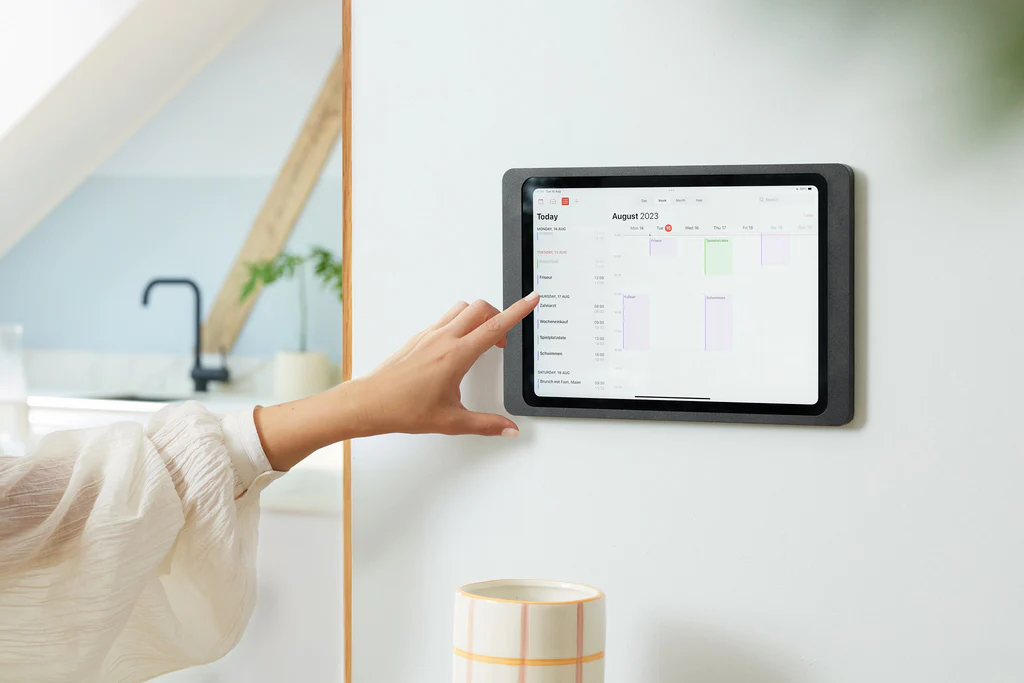
With the continuous development of smart home technology, more and more families are beginning to use smart home tablets to control various devices in their homes. From smart lighting, temperature control, security to multimedia entertainment, smart tablets put everything under control.
If you are still hesitating about which smart home tablet to choose, then this article will give you a detailed introduction to the most recommended smart home tablets in 2025, making your life smarter, more convenient and more humane!
#smartdisplay #smarthomedisplay #smarthomecontrol #tabletforsmarthome #poetablet #smarthomecontroltablet #tabletsmarthome #smarthometablets
Contact us for more details
Email: [email protected]
Official website: https://www.uhopestar.com/smart-home-tablet
WhatsApp: +86-13501581295
#smarthomemonitor #homeautomationtablet #homeassistantfiretablet #tabletforhomeautomation #tabletforhomeautomation #wallmountedtabletforsmarthome
Why do you need a smart home tablet?
Before the popularity of smart homes, controlling home devices usually required mobile phone apps or voice assistants. However, smartphones are sometimes not around, and voice control may not be very accurate in noisy environments. Therefore, a wall-mounted or desktop smart home tablet has become a more efficient and intuitive solution.
Advantages of smart home tablets:
✅ Centralized control - unified management of smart devices throughout the house, no longer requiring multiple remote controls or different apps
✅ Click and use - compared to the cumbersome operation of unlocking the phone + opening the app, smart tablets are at your fingertips and more convenient to use
✅ Stable and reliable - continuous power supply, no need to worry about power issues, online 24 hours a day
✅ Better interactive experience - touch + voice control, suitable for family members of different ages
✅ Beautiful and stylish - ultra-thin design, perfect integration with modern home style
So, what smart home tablets are worth recommending in 2025? Let's take a detailed look at some of the most popular products on the market!
#besttabletforsmarthome #homeassistantkiosktablet #homeassistantwallpaneltablet #smarthomewalltablet #homeassistantwallmountedtablet
Recommended best smart home tablets in 2025
1. Apple Home Hub Pro
Suitable for: Apple ecosystem users, families pursuing the ultimate experience
Home Hub Pro, launched by Apple in 2025, is one of the most powerful smart home control centers currently, designed for the Apple HomeKit ecosystem.
Advantages:
✔ 12.9-inch Liquid Retina display, ultimate HD experience
✔ Deeply integrated with HomeKit, can control all Apple Home compatible devices
✔ Siri voice control + touch dual interaction, fast response
✔ Ultra-low power mode, almost no power consumption in standby mode
✔ Face ID and Touch ID dual unlocking, extremely high security
Disadvantages:
❌ Only compatible with HomeKit devices, Android users cannot use it
❌ Higher price, flagship experience means a higher budget
Price: about $899

#smarthomecontrolpaneltablet #smartthingstablet #homecontroltablet #bestsmarthometablet #tabletsonsale #bestandroidtabletpc #bestbuytablets
2. Google Nest Hub Max 2
Suitable for: Google Home ecosystem users, home entertainment + smart home integrated experience
Google Nest Hub Max 2 ushered in an upgrade in 2025, equipped with a stronger AI assistant, and perfectly supports the Google Home ecosystem.
Advantages:
✔ 10-inch high-brightness touch screen, support gesture operation
✔ Google Assistant smart voice assistant, more accurate voice recognition
✔ Compatible with multiple smart home protocols, such as Zigbee, Matter, etc.
✔ Can be used for video calls, YouTube playback, family photo display
✔ Built-in stereo speakers, suitable as home audio
Disadvantages:
❌ Cannot fully integrate Apple HomeKit
❌ Need to connect to Google services, there are certain concerns about privacy
Price: about US$499
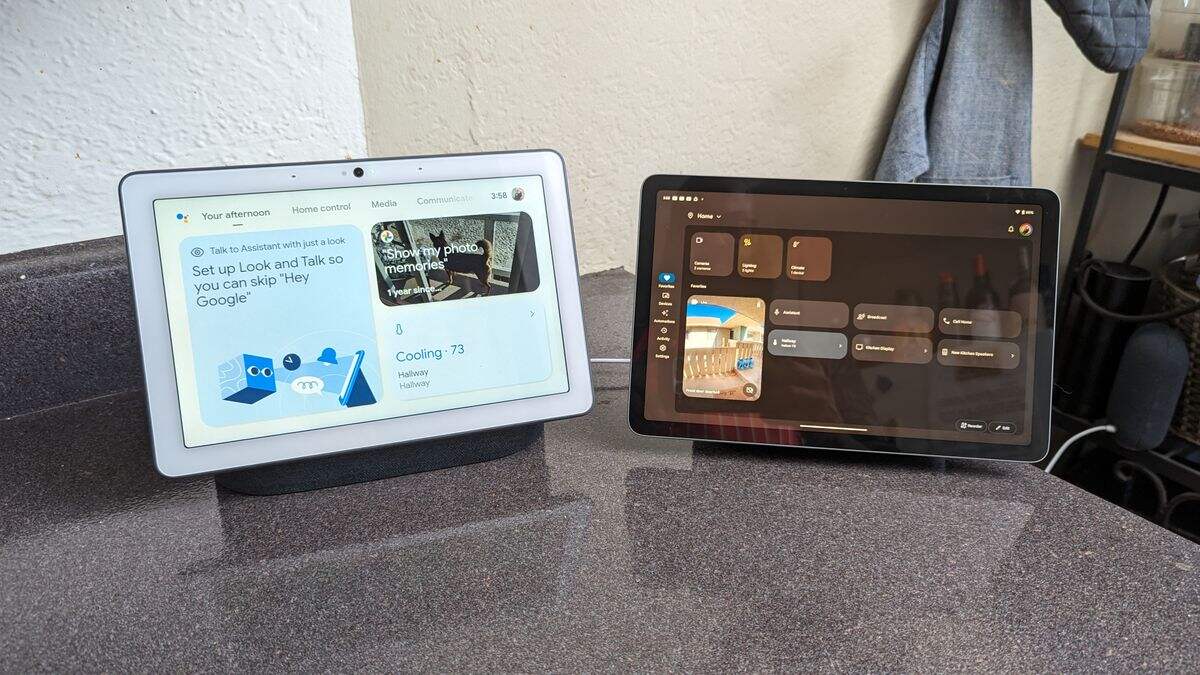
#smartdisplay #hometablet #smarthomecontrol #homeassistanttablet #smarthomedisplay #smarthometablet #tabletforsmarthome
3. Amazon Echo Show 15
Suitable for: Amazon Alexa ecosystem users, users who like large screens
If you like large screens, Amazon Echo Show 15 is undoubtedly one of the most suitable smart tablets for families in 2025, supporting wall-mounted and desktop use.
Advantages:
✔ 15.6-inch ultra-large screen, suitable for home bulletin boards and video playback
✔ Alexa voice assistant, supports voice + touch dual operation
✔ Perfect integration with Ring security system, more convenient to view doorbell cameras
✔ Low power consumption design, long-term operation does not affect electricity bills
✔ Compatible with Fire TV, can be used as a kitchen TV
Disadvantages:
❌ Mainly dependent on the Amazon ecosystem, limited support for Google Home and Apple HomeKit
❌ Not suitable for small apartments or homes with limited space
Price: about $399
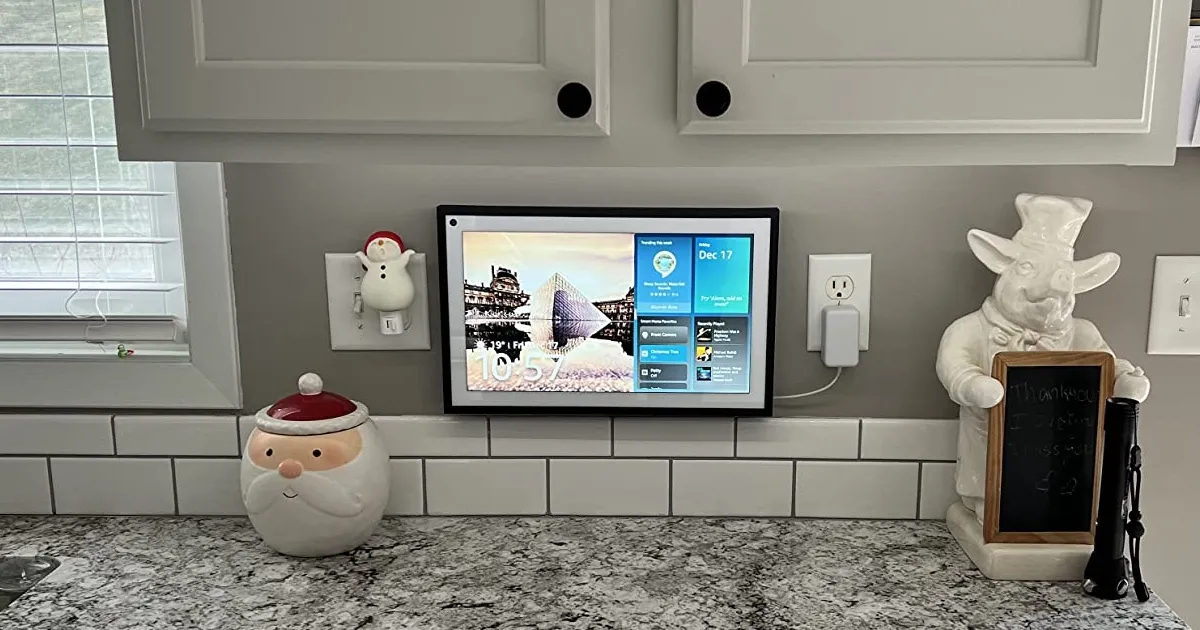
#SmartHome #HomeAutomation #IoT #MatterProtocol #ThreadProtocol #POE #RK3399 #RK3566 #SmartLiving #Innovation #smartdisplay #smarthomedisplay
4. Samsung SmartThings Panel X
Suitable for: Samsung SmartThings users who want a smart home with full-house linkage
The SmartThings Panel X released by Samsung in 2025 is designed for smart homes and can control almost all mainstream smart home devices.
Advantages:
✔ 12-inch AMOLED high-definition screen, excellent visual experience
✔ Deep integration of Samsung SmartThings ecosystem, support for multi-brand linkage
✔ IoT standards Matter + Zigbee + Wi-Fi 6E, multi-protocol compatibility
✔ AI self-learning function, intelligent recommendation of daily home mode
✔ Support Bixby, Google Assistant, Alexa three major voice assistants
Disadvantages:
❌ SmartThings ecosystem has low support in some regions
❌ Limited support for Apple HomeKit
Price: about $599
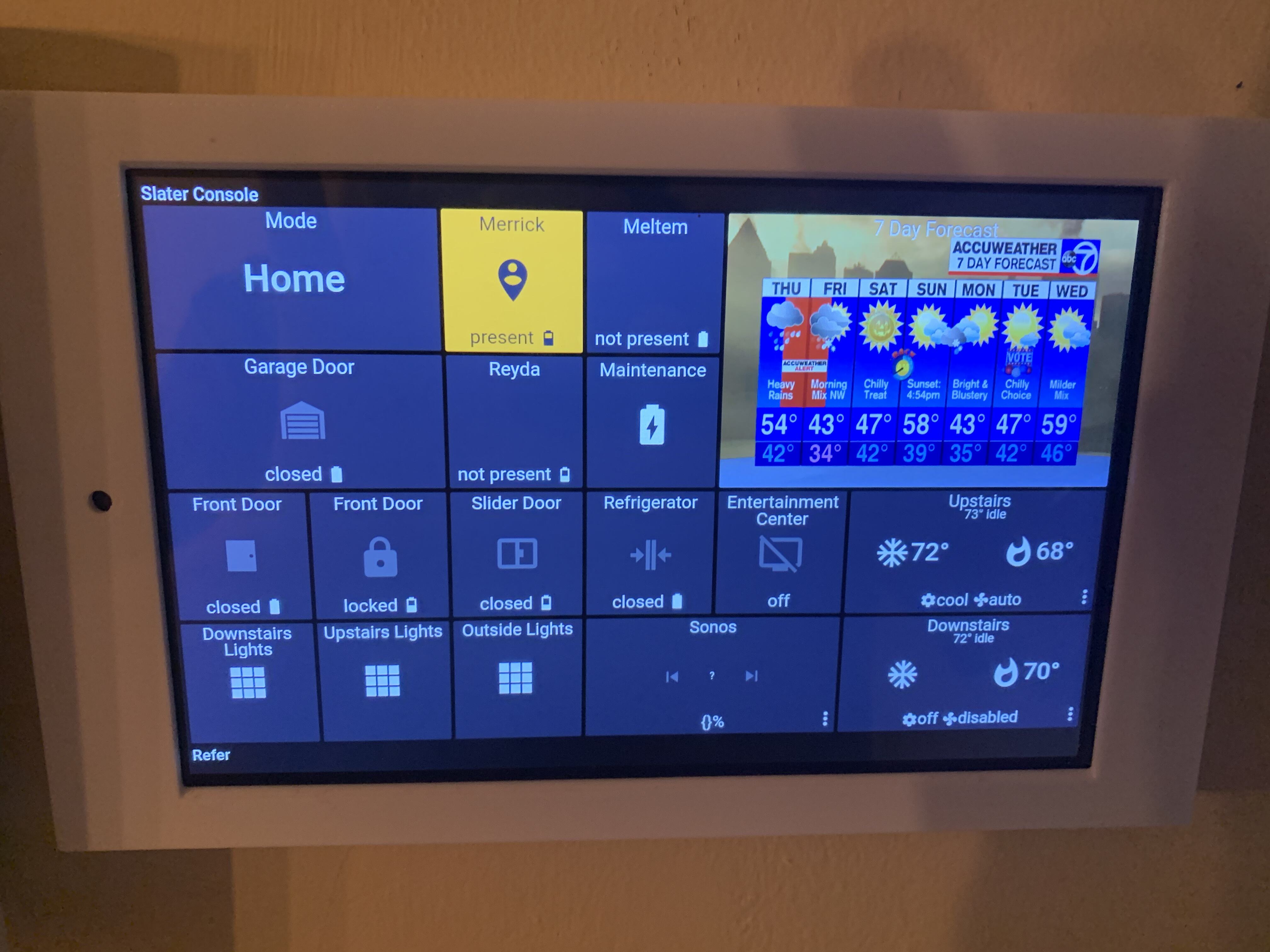
#factory #tabletfactory #manufacturer #oem #odm #meetingtablet #Commercialtablet #AndroidTablet #digitalsignagedisplay
How to choose the smart home tablet that suits you?
✅ If you are an Apple user → Choose Apple Home Hub Pro, which is deeply integrated with HomeKit and has the best experience
✅ If you like the Google ecosystem → Choose Google Nest Hub Max 2, AI voice assistant + multi-function entertainment
✅ If you prefer Amazon Alexa → Choose Amazon Echo Show 15, large screen + video call + security integration
✅ If you use the SmartThings ecosystem → Choose Samsung SmartThings Panel X, which supports multi-brand smart devices
✅ If you prefer a custom ecosystem → Choose hopestar smart home tablet, which supports custom systems
#digitalsignagemonitor #digitalscreen #digitalsignage#smarthomecontrol #tabletforsmarthome #poetablet #smarthomecontroltablet #tabletsmarthome
#smarthomemonitor #homeautomationtablet #homeassistantfiretablet #tabletforhomeautomation #tabletforhomeautomation #wallmountedtabletforsmarthome
Smart home tablets vs. regular tablets: A comprehensive analysis of features, performance, and ecosystem
With the development of technology, smart home tablets have gradually become the core control devices of modern families. Many people may wonder when choosing: What is the difference between smart home tablets and ordinary tablets (such as iPads and Android tablets)? Since ordinary tablets can also install smart home apps, why do we need special smart home tablets?
This article will analyze the differences between the two in detail from the three aspects of function, performance, and ecosystem to help you better choose the smart device that suits your family.
#androidtablet #androidtablets #tablet #tablets #factory #tabletfactory #manufacturer #oem #odm #meetingtablet #Commercialtablet
Smart Home Tablets vs. Regular Tablets: The Core Differences
| Comparison Aspect | Smart Home Panel | Regular Tablet |
| Primary Purpose | Smart home device control | Entertainment, work, study |
| Installation Method | Wall-mounted / Fixed on desk | Portable, handheld |
| Operation Mode | Touch + Voice Control | Primarily touch-based |
| Compatible Devices | Supports smart home protocols (Zigbee, Matter, HomeKit, etc.) | Mainly relies on apps, lacks centralized control |
| Power Supply & Battery | Continuous power supply, no need to charge | Battery-powered, requires regular charging |
| Smart Automation | Supports smart scenes like "Home Mode" and "Away Mode" | Mostly requires manual control via apps |
| Speaker & Voice Assistant | Built-in AI assistants like Alexa, Google Assistant, Siri | Can install voice assistants, but lacks deep smart home integration |
| Security Features | Family access control, remote monitoring | Personal use, limited family management functions |
| Price | Higher ($300-$900) | Wide price range ($100-$1500) |
#AndroidTablet #digitalsignagedisplay #digitalsignagemonitor #digitalscreen #digitalsignage #advertisingposter #digitalsigns
1. Functional comparison: Focus on smart control vs. multi-purpose devices
Smart home tablet: designed for home automation
The main function of a smart home tablet is to centrally control smart devices in the home, such as lighting, air conditioning, curtains, security systems, audio, etc. It usually has:
✅ One-touch whole-house control – manage all smart home devices easily through one interface
✅ Smart scene mode – set “home mode”, “sleep mode”, “theater mode”, etc., and automatically perform a series of operations
✅ Voice + touch dual interaction – combined with AI assistants (such as Siri, Alexa, Google Assistant) and touch, it is more intuitive to use
✅ Continuous online operation – fixed installation, power supply, no need to worry about battery life
✅ Family sharing – everyone can use it, no personal account login is required
#advertisementtablet #digitalsignagemonitor #digitalsignagedisplayscreens
Ordinary tablets: multi-purpose but not specialized
Ordinary tablets (such as iPad, Samsung Tab, etc.) are mainly personal devices, with functions covering entertainment, office, learning and other fields, including:
✔ Watch movies, play games, browse the web, handle emails
✔ Run various APPs (including smart home control APPs)
✔ Support stylus and keyboard, suitable as a productivity tool
✔ Portable, can be carried with you
But there are problems when using ordinary tablets for smart home control:
(1) Need to open the APP manually, can't achieve instant control
(2) Can't be online continuously, can't receive smart home notifications after standby
(3) Limited battery life, need to be charged frequently
(4) Mainly for personal use, family members need to install the APP and set up accounts separately
Summary: If you need a dedicated home control center, smart home tablets are obviously more suitable. If you only control smart home occasionally, ordinary tablets can also be used for emergency.
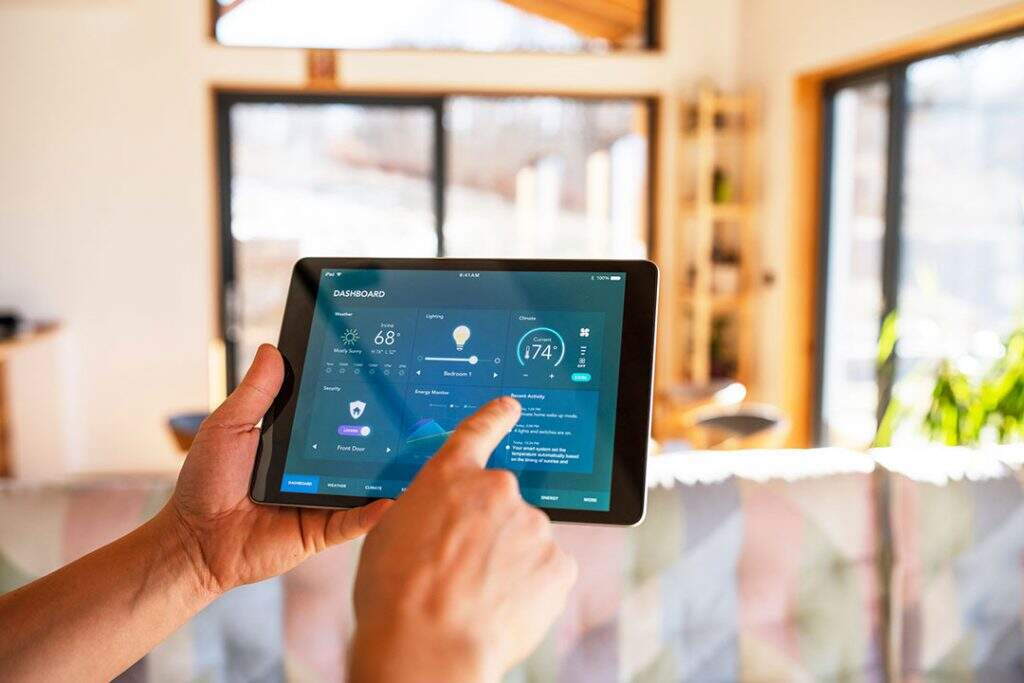
2. Performance comparison: dedicated hardware vs. general hardware
Performance characteristics of smart home tablets
(1) Continuous power supply & low power design
Smart home tablets generally use low-power processors to ensure all-weather operation. Even if the screen is turned on for a long time, it will not cause high energy consumption.
(2) Fast response & low latency
Since smart home control is specially optimized, the operation response is fast. Compared with ordinary tablets that need to wait for APP to load, smart home tablets usually use customized systems and directly enter the control interface, which is faster.
Highly integrated hardware
Smart home tablets have multiple built-in communication protocols, such as:
✔ Zigbee – connect to smart bulbs, sensors, etc.
✔ Z-Wave – control door locks, security equipment
✔ Matter & Thread – compatible with the new generation of smart home devices
✔ Wi-Fi & Bluetooth – connect to more smart terminals
Performance characteristics of ordinary tablets
Ordinary tablets are generally equipped with high-performance processors for performing multiple tasks, such as games, video editing, etc.
✔ High refresh rate screen – suitable for entertainment experience
✔ Powerful GPU – suitable for high-load applications
✔ Strong mobility – suitable for carrying around
However, these features are not essential for smart home control:
(1) Limited battery life, high charging frequency, not suitable for long-term hanging
(2) No special smart home communication protocol support (such as Zigbee, Matter), requiring additional gateway devices
(3) Because it is a general system, the smart home control experience is not as smooth as a dedicated smart home tablet
Summary: Smart home tablets sacrifice some entertainment performance in exchange for higher stability and smart home compatibility, while ordinary tablets are more inclined towards personal entertainment and productivity.
3. Ecosystem comparison: smart home linkage vs. multi-function application
Smart home tablet: deeply integrated smart ecosystem
✅ Apple Home Hub Pro – compatible with HomeKit, supports Siri voice control
✅ Google Nest Hub – suitable for Google Home ecosystem, compatible with Matter/Zigbee
✅ Amazon Echo Show – deeply bound to Alexa, can connect to Ring security devices
✅ Samsung SmartThings Panel – suitable for SmartThings ecosystem, supports multi-brand devices
The core value of smart home tablets is that they can seamlessly link all smart devices to form a complete ecological closed loop.
For example, with a smart home tablet, you can do the following:
✔ Home mode – when you walk into the house, the lights automatically turn on, the curtains slowly open, and the air conditioner is adjusted to a comfortable temperature
✔ Sleep mode – turn off all lights and appliances, lower the air conditioner temperature, and activate the security system with one click
✔ Voice control – “Alexa, dim the lights” without opening the APP or touching the screen
Ordinary tablets rely on smart home APPs from various brands, for example:
✔ Apple users use the “Home” APP
✔ Google users use the “Google Home” APP
✔ Xiaomi users use the “Mijia” APP
The disadvantage is that different APPs are incompatible and cannot form a unified management. You need to switch between different APPs, and the experience is poor.
Summary: The ecosystem of smart home tablets is more open and stable, while ordinary tablets mainly rely on APPs from a single brand and have poor linkage.
Conclusion: Smart home tablets are the future home control core!
In 2025, smart home tablets are not only a control terminal, but also the smart center of the family, making our lives more convenient, comfortable and efficient.
Does your home need a smart tablet? Which product do you prefer? Welcome to share your views in the comment area! ?
Follow us to get more latest information on smart home!
Table of Contents
- Why do you need a smart home tablet?
- Recommended best smart home tablets in 2025
- How to choose the smart home tablet that suits you?
- Smart home tablets vs. regular tablets: A comprehensive analysis of features, performance, and ecosystem
- Conclusion: Smart home tablets are the future home control core!


